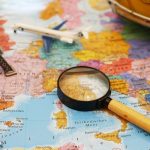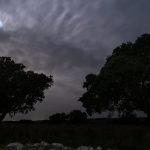
Forefathers Day
Forefathers’ Day is a holiday observed on December 22nd and commemorates the landing of the Pilgrims in Plymouth, Massachusetts. For Americans, this holiday helps them connect with their national history, and for some, with their personal history. The Pilgrims landed in Plymouth on December 16, 1620, and this holiday was first introduced in that area in 1769. Now it’s celebrated across the United States.
The History of Forefathers’ Day
Forefathers’ Day was first observed by one of the oldest gentlemen’s clubs in the U.S., known as the Old Colony Club. They created this holiday to honor their forefathers, and they started the first celebration on December 22, 1769.
That original celebration began at 6 in the morning with a march by members to the top of Cole’s Hill by the Massasoit statue. This was followed by a reading of a proclamation that honored their Pilgrim forefathers and a celebratory firing of the club’s cannon.
It’s a holiday that has been observed ever since, although it took a while before it was celebrated on a widespread basis. In 1920, U.S. President Woodrow Wilson proclaimed the day as Pilgrims’ Day, and some people still celebrate the holiday under that name.
Facts About the Pilgrims
In 2020, the 400th anniversary of the Mayflower voyage was observed, and the importance of this holiday has been brought into even sharper focus. That’s why we decided to gather as many facts about the Pilgrims as we could and share them with everyone reading about Forefathers’ Day.
The Pilgrims Tried Living in the Netherlands First
The Pilgrims left England to escape the country’s rule over the way Christians could worship their God or raise their children. They first traveled to the Netherlands to establish a Christian church free of government influence. Feeling like they were losing their “English” identity and being assimilated into Dutch society, they decided in 1620 to sail to the New World.
Delays Led to a Dangerous Winter Crossing
The original plan of the Pilgrims was to cross the ocean in June, but because they had to gather and manually load the supplies themselves, they ended up setting sail in late fall. As a result, many Pilgrims were sick or dying and had to immediately begin building a community when they landed to survive.
The Reason Why They Ended Up at Cleared Land
When they arrived at Plymouth, they encountered cleared land suitable for establishing a village, which must have seemed miraculous to them. However, it wasn’t a miracle that the area was clear; it was once the site of a Native American village known as Patuxet. Between 1616 and 1619, a plague killed many Wampanoag people, and the only remaining member was Tisquantum—otherwise known as Squanto.
Observing Forefathers’ Day
Anyone wishing to observe this holiday can do so by learning more about the Pilgrims, the history of the U.S., or their personal history. Since many people in the U.S. aren’t descendants of the Pilgrims, it’s a good day for people to trace their history back to their original ancestors. If you’re observing this holiday, be sure to use the hashtag #ForefathersDay on your social media posts for the day.








